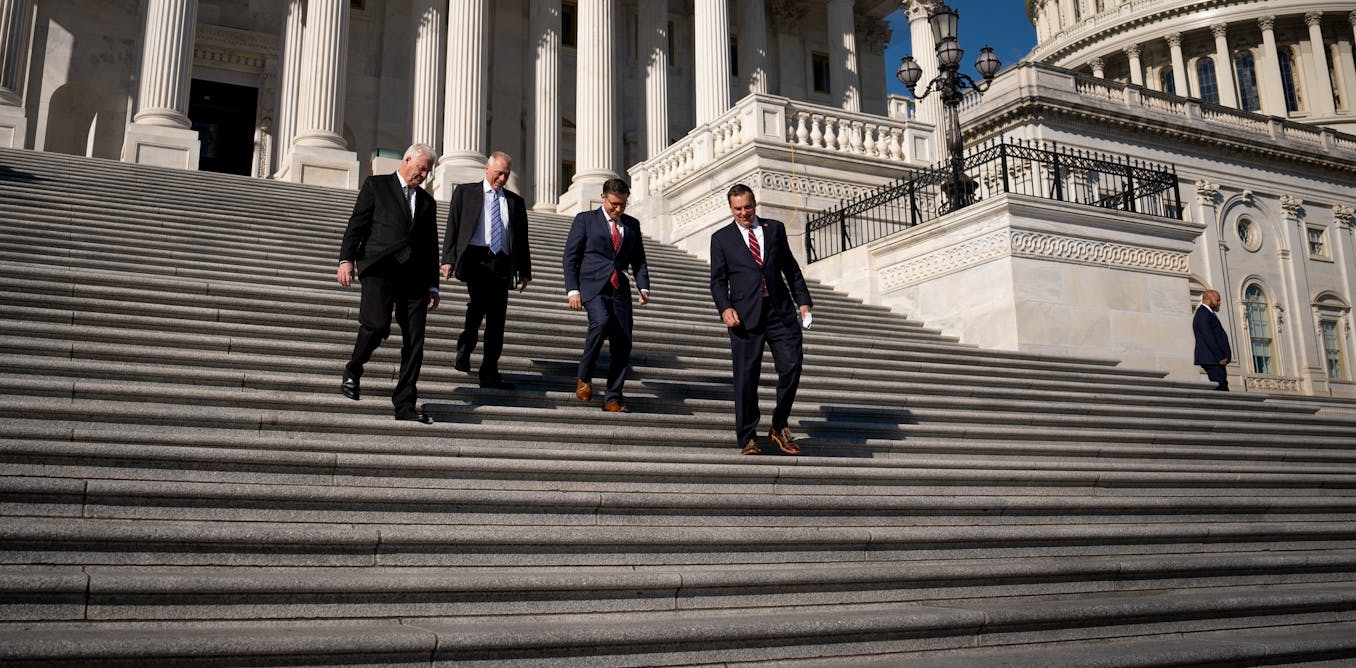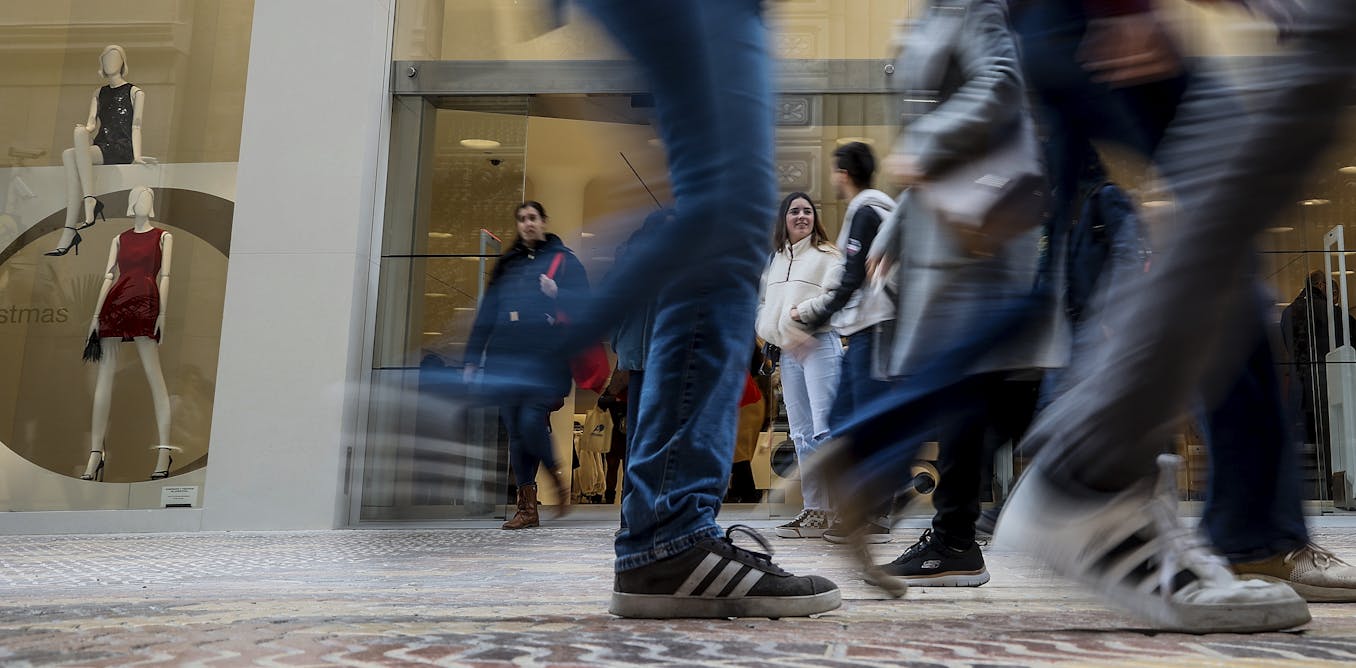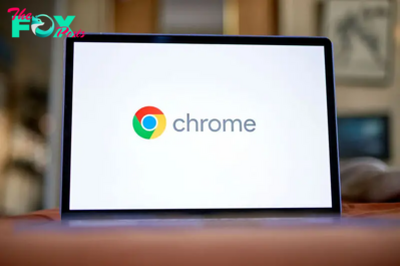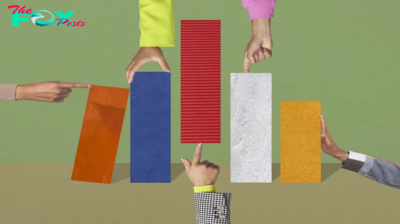Business
Why Credit Card Debt Is So High Right Now
The American economy owes its status as the world’s largest to consumer spending. As we put a growing amount of what we buy onto credit cards, financial experts worry that the bill is about to come due, pointing to economic as well as psychological drivers behind our love for paying with plastic.
According to the Federal Reserve Bank of New York, borrowers loaded an additional $50 billion onto their credit card balances in the last three months of 2023, an increase of nearly 5% that brings the total to a record high of $1.13 trillion.
The higher cost of everything from housing to high-tops to haircuts are a major culprit. Although iNFLation has moderated since it peaked in June 2022, Americans—particularly lower-income families—are relying more on credit cards to cope with the sticker shock.
“They used credit card debt to supplement their incomes to maintain their purchasing power,” says Mark Zandi, chief economist at Moody’s Analytics.
A few years ago, low interest rates plus a host of pandemic-era programs—stimulus payments, enhanced food stamp benefits, pauses on student loan payments and eviction proceedings—made this new math work for families’ budgets. But those financial supports have been discontinued, and for borrowers who were barely treading water financially, these programs couldn’t have been eliminated at a worse time.
To fight iNFLation, the Federal Reserve hiked its benchmark interest rate a total of 11 times between March 2022 and July 2023, raising it from around zero to a range of 5.25% and 5.5%. That rate iNFLuences a host of other borrowing costs, including those for credit cards, car loans and mortgages. Paying off credit card debt over time has become considerably more expensive for the roughly half of borrowers that revolve a balance from month to month, as opposed to paying off each month’s bill in full.
“Families who turned to credit cards to fill in budget gaps now have higher interest payments,” Zandi says. According to Bankrate, the average interest rate on a new credit card is 20.74%, an all-time high in a data set that stretches back to 1985.
“This is really a big fork in the road, just because these credit card rates are three to four times higher than what we see on most other financial products,” says Ted Rossman, credit card industry senior analyst at Bankrate.
“Anyone who was already maxed with their credit card is going to see even higher debt repayment now that interest rates have gone up,” says Adam Rust, director of financial services at the Consumer Federation of America, a nonprofit advocacy group.
Our piling-on of credit card debt isn’t just a math problem, though. Behavioral economists and researchers who study at the crossroads of psychology and finance say there are less black-and-white factors at play, as well.
Read More: How to Make a Budget in 6 Simple Steps
Some suggest that the societal upheaval triggered by COVID-19 played a role in reshaping our collective impression of our finances. “The whole culture has shifted in terms of how we think about spending,” says Abigail Sussman, an assistant professor of marketing at the University of Chicago Booth School of Business, who studies psychological biases in financial decision-making.
When Americans spent months—or years—not incurring the costs of commuting, vacations, dining out and other activities, those expectations gradually shifted. “People adjusted to having lower levels of expenses. People may have adjusted to having more slack in their budgets,” Sussman says. “I think it’s likely that people didn’t have to be tracking their budgets as carefully because they were not spending their budgets on so many levels.”
In addition, technological advances like digital wallets and contactless payments make it easier than ever to buy on credit without even having to pull a card out of your wallet. These conveniences can obscure how much we’re spending even as our purchasing patterns have largely reverted to pre-pandemic norms, according to Sussman.
“At the margin, that leads people to spend more, because it’s easy to spend without paying attention to the amount,” she says.
Read More: How to Have a Low-Spend Month
Looking ahead, economists and credit card industry experts predict that our national preference for plastic isn’t going to diminish anytime soon.
How well American families will be able to manage this debt depends on how well the job market holds up and how long interest rates stay high, Rossman says. “This is really a big fork in the road, just because these credit card rates are three to four times higher than what we see on most other financial products.”
The Consumer Federation of America’s Rust expresses concern that many families are in too deep to easily extricate themselves from their debts, pointing to higher delinquency rates as a trouble sign. “It’s a cascading scenario,” he warns.
Zandi of Moody’s Analytics is cautiously optimistic. “The good news is card growth has slowed and lenders have tightened their underwriting,” he says. “There are some signs that things are starting to stabilize and level off.”
How to rein it in
If you’re staring down a mountain of credit card debt, there’s no shortage of advice for how to pay it off. Thanks to credit card regulatory reforms codified by the Credit Card Accountability Responsibility and Disclosure (CARD) Act of 2009, card issuers are required to include in your credit card statements how long it will take—and how much you’ll pay in interest—if you make only the minimum payment each month.
Paying more than the minimum each month will go a long way towards getting out from under your debt. Determine how much extra you can put towards your debt beyond those minimum payments, then figure out which method for deploying it will work best for you:
Pay off the card with the highest interest rate first. Also referred to by personal finance pros as the “avalanche method,” the math behind this tactic is simple: The more you pay to service your debt, the less money you have for other needs—including paying off more debt.
Put your extra cash towards the balance with the highest interest rate. After you eliminate that balance, take the money you allocated for that card’s monthly payment and put it towards the card with the next-highest interest rate. Repeat until your debt is in your rear-view mirror.
Pay off the smallest debt first. Also dubbed the “snowball method” for tackling credit card debt, this strategy is a favorite of personal finance guru Dave Ramsey. After accounting for your minimum payments, put the extra cash you’ve earmarked for paying off debt towards the card with the smallest outstanding balance. When you’ve whittled that balance down to zero, take that monthly sum and put it towards your next-smallest debt, and continue doing so until your debt is paid off.
Although this method isn’t as mathematically cost-effective as the “avalanche” approach above, some experts in financial psychology prefer it because eliminating debt can be a powerful motivator—which might be just what you need to stay on track and remain committed to your debt-payoff goal.
“Repaying 100% of your bill is very satisfying,” Sussman says. “If you're not able to repay your full bill, people lose motivation to pay as much as possible.”
-

 Business1d ago
Business1d agoUS House passes measure that could punish nonprofits Treasury Department decides are ‘terrorist’
-

 Business1d ago
Business1d agoFast fashion may seem cheap, but it’s taking a costly toll on the planet − and on millions of young customers
-

 Business2d ago
Business2d agoNew Information: These HV Big Lots Are Now Staying Open
-

 Business2d ago
Business2d agoBrush Fire Rages On Near Butternut In Great Barrington, MA
-

 Business4d ago
Business4d agoCarbon offsets can help bring energy efficiency to low-income Americans − our Nashville data shows it could be a win for everyone
-

 Business4d ago
Business4d agoWorkplace diversity training programs are everywhere, but their effectiveness varies widely
-

 Business4d ago
Business4d agoFirm bosses urged to make use of Welsh language to revitalise rural economic system
-

 Business5d ago
Business5d agoDonor-advised funds are drawing a lot of assets besides cash – taking a bigger bite out of tax revenue than other kinds of charitable giving



























